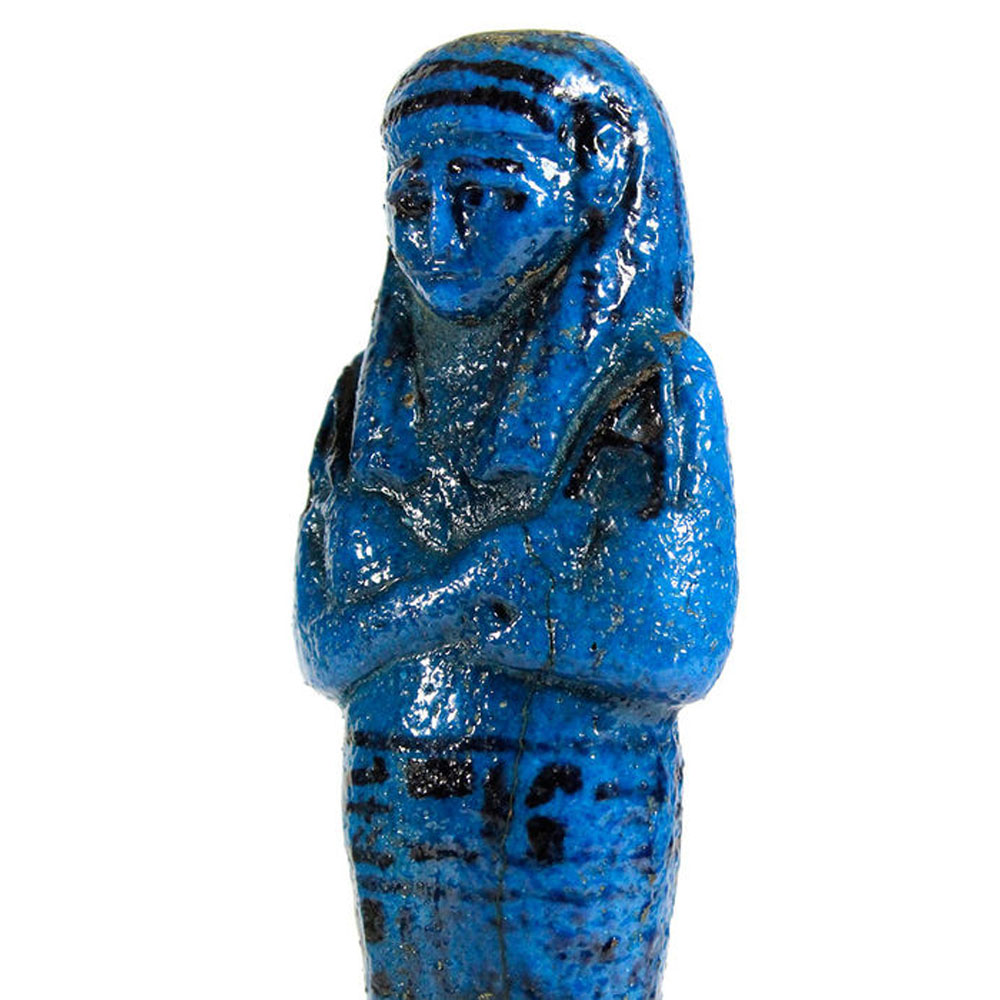By Keith R. Amery Auctioneer, Archaeological Finds and Remains Expert
Each week, we have a huge amount of incredible items up for auction. More often than not, items have either an incredible story or a certain historical value, that you might not know about. We’d like to change that! Earlier, we wrote about the Ancient Egyptian ushabti’s. This week, we will discuss the ancient royal shabti for the Princess Nesy-Khonsu, which was discovered by chance in 1881. This event was depicted in the film 'Al Mumia', which we'll use as a guide to lead us through the story of this remarkable discovery!
The Night of Counting the Years
A really unique production of Egyptian cinema is the only historical feature film of Pharaonic Egypt by an Egyptian Director, Shadi-abd el Salam, ‘Al Mumia’ (The Mummy) translated in English as ‘The Night of Counting the Years’ (1969). Although reading like a story of the Arabian Nights, the film is a dramatization of actual events in 1881 when a villager from Qurna, on the West Bank of the Nile at modern day Luxor went in search of a lost goat from his family’s herd and made one of the most important discoveries in the history of Egyptology. The family was the Ab der Rassul’s, a known family of antiquities hunters in an era when Grand Tour Victorian travellers couldn’t claim to have completed a pilgrimage to the Holy Land without taking a mummy or two back from Egypt.

Source: dubaifilmfest.com
The rampant tomb robbing of the age encouraged a Frenchman, Auguste Mariette, sent to Egypt to collect Coptic manuscripts for the Louvre Museum back home in Paris, to establish Egypt’s first ‘Service des Antiquites’ and the fledgling Cairo Museum. Deep in the cliffs behind the terraced temple of Queen Hatshepsut, the first truly female pharaoh in Egyptian history, the local shepherds found an amazing cache of royal mummies of the greatest pharaohs of the New Kingdom, ancestors and successors of the boy king Tutankhamun who is famous for his fabulous golden treasure tomb in the Valley of the Kings, nearby Qurna and Deir el Bahri.

A Remarkable Discovery
The first cache as it has become known also contained the burial goods of a large number of priestly burials of Egypt’s 21stand 22nd Dynasties. At this time the priesthood of Thebes in middle Egypt was extremely powerful, equal to that of the nominal pharaoh’s of the era, who ruled from Tanis in Egypt’s Nile delta in the north of the country. Before the local authorities learnt of the discovery, a large number of the portable tomb contents were removed by the ab der Rassul’s and sold on the local antiquities market, finding their way to national museums and private collections around the world.
One of the most impressive of the distinctive dark blue faience figures are those of the Princess Nesikhonsu, possibly the original owner of tomb TT320, along with her husband, the Priest-King Pinudjem II (d.969B.C.) Neskhons held the honorary title of First Chantress of Amun, a High Priestess of the King of the Gods in the Egyptian pantheon. Strangely she also held the purely honorific title of ‘King’s son of Kush’, a title we would today loosely translate as Governor of the Sudan.

The Royal Cache also contained tomb accoutrements of other members of Neskhons family. At the end of Salam’s dramatization, the locals of Qurna line the cliffs of Qurna and send up the traditional mourning ululation as they watch the mummies of their great kings hauled away to the Cairo Museum on an government boat.
Now up for Auction
Thankfully to this chance discovery we can come face to face with a funerary representation of one of the most important women of ancient Egypt, when the priest-kings’ were equal in power and status to the royal kings of the Delta. A rare opportunity to obtain a desirable royal ushabti tomb figure from one of the greatest archaeological discoveries of all time. But beware: it sets many collectors on the path of obtaining one of each of the known faience ushabti tomb figures from both the first and second Deir el Bahri cache’s!

It is an exceptional deep blue glazed faience, shown mummiform, with the features applied in black. Slim and handsomely proportioned, the well-modeled features include an unusually fine heart-shaped face with accented eyes and eyebrows, straight nose and small mouth. She holds two hoes and carries a seed basket positioned at the back below the striated tripartite wig. Six registers of text wrap around the body, almost meeting at the back, reading: “The Osiris, first chief of the concubines of Amun, NesKhons…“ followed by the standard Chapter 6 shabti spell from the Book of the Dead.
Take a look at our exclusive archaeological finds auction for this incredible shabti. You can also take a look at our other archaeological finds & remains auctions or register as a seller here.